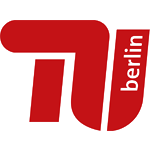Difference between revisions of "Team:Berlin/Practices/LNdW"
Jpalbrecht (Talk | contribs) |
Jpalbrecht (Talk | contribs) |
||
| Line 157: | Line 157: | ||
technologies, languages, natural sciences, music, or medicine and health, everyone will find | technologies, languages, natural sciences, music, or medicine and health, everyone will find | ||
something that takes their fancy. <br/><br/> | something that takes their fancy. <br/><br/> | ||
| + | </div> | ||
</div> | </div> | ||
Latest revision as of 17:02, 18 September 2015
Lange Nacht der Wissenschaften



We took part in the LNdW this year and presented our project Enzymatic Flagellulose , its aims
and findings, to the audience visiting the chemistry faculty in the campus of the Technical
University Berlin. Visitors, from all ages, including complete families and friends had the
opportunity to see our lab and perform easy experiments while guided by our students. We
presented a very clear workflow highlighting the problem and our steps to solve it. Our
participation in the LNdW allowed us to draw attention to both the iGEM competition in
general and to the problematic issue about microplastics. We could entrust many people to be
more conscious about microplastics and take better care of its consumption and disposal, and
in turn, reduce the contamination of our environment. At the same time we established contact
for subject-specific questions and we thrilled many high school and university students to
participate in the iGEM competition next year. Furthermore, we received positive feedback
from our visitors and they encouraged us in our aims and optimization of our idea. It was very
important for us to take the non-scientific audience to the lab so the general public gets the
feeling that scientists have a transparent and open mind, willing to communicate and share.
This event pretty much relates and adds value to the “Science Café”, where we took the lab and
the scientists to the people. We are already looking forward to LNdW 2016!
Thanks to
















